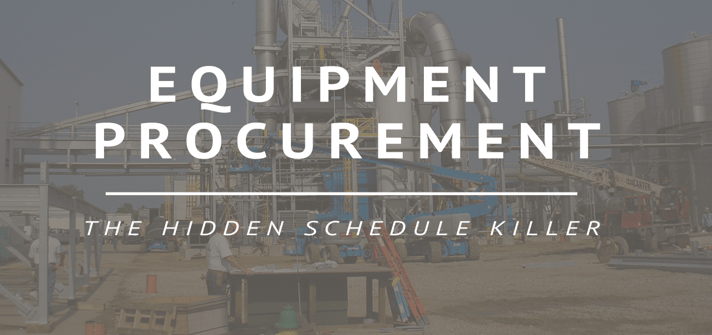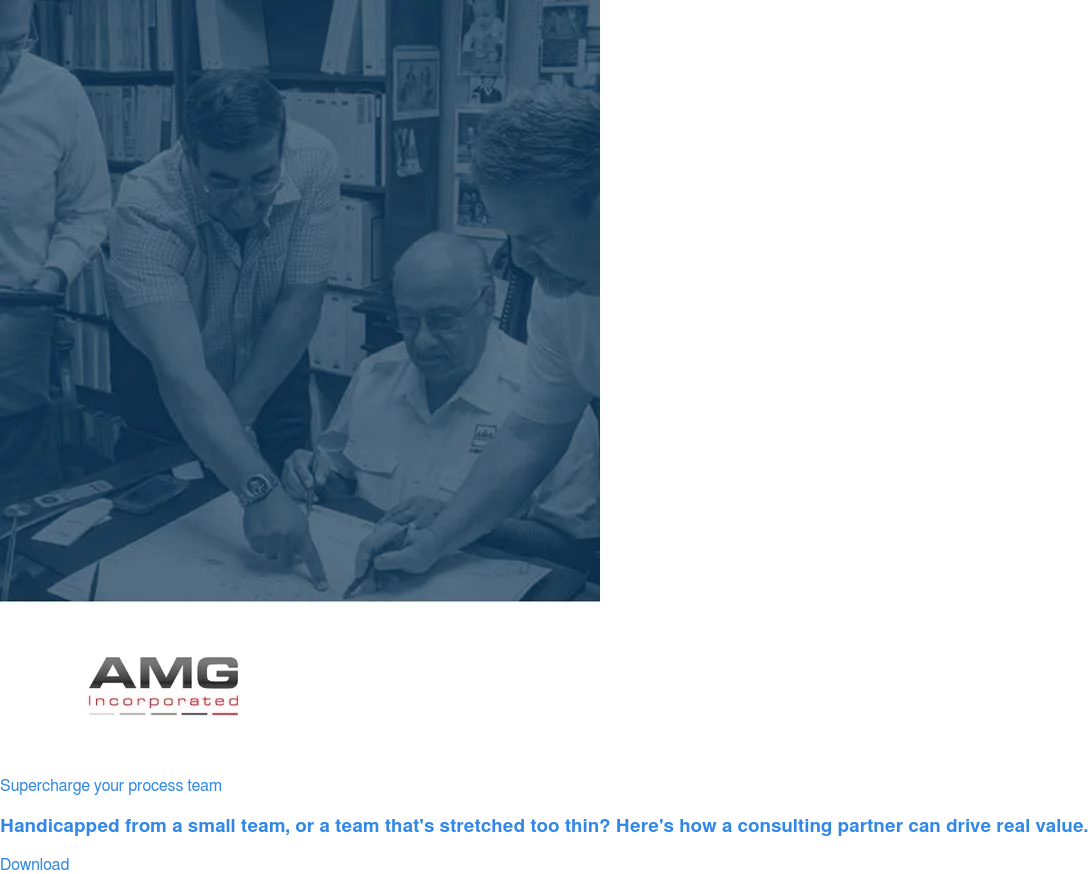
Building a construction schedule seems like a simple thing to do, right?
Dig a hole, pour some concrete, erect some steel, install some equipment, pipe it up, wire it up, start it up…and presto – you’ve got a construction schedule.
Not so fast.
While the above outline seems right, procuring the right equipment for the build is a hidden schedule killer—one that’s often not thoughtfully presented or considered during the initial project schedule.
Many times, the first schedule produced for a project is prepared by someone that has little experience with construction, and even less experience with scheduling. It’s the rookie project engineer that’s given the job of preparing the outline of the project justification—the basis for establishing the project Return on Investment (ROI).
These “preliminary” schedules have a tendency to stick in the minds of upper level management before the construction team has an opportunity to weigh in. This may work fine on a small project where there may be 3 pieces of process equipment and 3 instruments, but on larger projects when there are hundreds of pieces of equipment and hundreds of instruments and valves, the early project schedule deserves a little more attention, particularly in the one area that is typically overlooked: equipment procurement.
In order to properly account for the procurement activity while scheduling, it’s important to have a full understanding of the process.
What is Procurement Anyway?
Most of us think about procurement as being the stuff that the purchasing people do. That is certainly a big part of it, but there is much more to procurement than that.
BusinessDirectory.com has the following definition of procurement:
The act of obtaining or buying goods and services. The process includes preparation and processing of a demand as well as the end receipt and approval of payment. It often involves:
- purchase planning,
- standards determination,
- specifications development,
- supplier research and selection,
- value analysis,
- financing,
- price negotiation,
- making the purchase,
- supply contract administration,
- inventory control and stores, and (not so applicable to construction procurement)
- disposals and other related functions. (not so applicable to construction procurement)
In the list of tasks above, items 2, 3, 4, and 5 are generally carried out by engineering staff, and items 2 and 3 generally can’t begin until the process design, mass and energy balances are complete.
Procurement Scheduling is More Than Just-in-Time Delivery
The first place that poor procurement planning and scheduling rears its ugly head is in detailed engineering.
In today’s construction environment, cost control is king. In order to control cost in construction, the contract drawings must be complete and as error free as reasonably possible to minimize field change orders. In order to have complete and error free construction drawings, certified vendor drawings are required in the early stages of engineering.
A few examples of the dependence of engineering on procurement are as follows:
- Example 1:
Large shop fabricated vessels (fermenters, silos, distillation columns, etc.) require very accurate placement of anchor bolts, and often times the anchor forces are too large to allow use of epoxy or mechanical expansion anchors. In order for the foundation drawings to be complete and accurate at the time of bid, the certified vessel drawings must be available in reasonable time ahead of the Issue for Bid (IFB).
This also means that the process design that drives the specification of these vessels must be complete in time to bid and award the vessel supply, vendor selection, set-up of the vendor in the purchasers ERP system, negotiation of the supply contract T’s & C’s & general conditions, issuance of a purchase order, and the vendor’s development of shop drawings.
It’s not uncommon for the bidding process to take 4 weeks and the award to PO issue process to take an additional 4 weeks. If the foundation bidding and award process takes an additional 6 weeks, the vessels must be specified at a minimum 14 weeks prior to the beginning of the foundation installation.
- Example 2:
The design of structural steel is very dependent on the things that the steel supports. Large, complex equipment such as evaporators, flash dryers, dust collection equipment, etc. require accurate placement of steel support members and bolt holes for attachment of the equipment.
In order for the steel fabrication bid drawings to be accurate and complete at IFB, certified vendor drawings must be available early in the steel design phase.
- The process design must be complete
- Bidding and procurement of the equipment in order for the manufacturer to prepare the equipment shop drawings needs to take place (4 weeks)
- The steel must be designed per the requirements of the equipment drawings (6 to 10 weeks)
- The steel fabrication package must be bid, awarded, negotiated, contracted, and PO issued. (4 to 6 weeks)
- The fabricator must order the steel, create shop drawings for fabrication, and must fabricate and deliver the steel (10 to 16 weeks)
- This overall process from equipment specifications complete to beginning of steel erection, as illustrated above, can take 24 to 36 weeks.
- Example 3:
Piping design and pre-fabrication has similar dependencies as above. Piping geometry, layout, and connections to equipment all depend on the related certified equipment drawings.
There are also trickle down effects due to equipment interdependencies. A few examples are as follows:
- An agitated tank requires that the agitator be procured before or at the same time as the tank so that the agitator loads and nozzle details can be coordinated with the tank design & purchase.
- Motor Control Centers cannot be purchased with confidence until the motors that they control have been confirmed by the equipment vendor drawings, which are dependent on the equipment procurement
The Upsides of Well-planned & Scheduled Procurement
Apart from the obvious schedule benefits, there are many positive outcomes from having a well-planned & scheduled procurement effort. The most glaring benefits include:
- An aggressive procurement strategy will require that most of the process decisions be made early in the project. This minimizes process decisions being made late in the project, which should ultimately minimize surprises, scope creep, and field change orders.
- Since equipment is generally 40% of project cost, 40% of the project budget can be confirmed in the first several months of the project with timely procurement strategies.
Respect the Procurement Process
Most engineers that are involved in construction management, planning, and scheduling grow through an evolutionary process in the understanding of and use of project controls. Scheduling is certainly one area where we learn on each and every project. Unfortunately, many project engineers haven’t been exposed to the intricacies of the procurement efforts because that was someone else’s job.
As corporate procurement requirements become stricter, budgets become tighter, and project schedules become increasingly aggressive to meet production and sales expectations and deadlines, project engineers need to properly represent the procurement efforts in their schedules.
Avoid the urge to cut weeks in the schedule because you “think” it can be done faster. There’s always a tendency to cut the tasks that are less familiar—and for us technical types, procurement falls in that category.
Remember, procurement tasks and their dependents are some of the most significant contributors in driving a project’s critical path. Give procurement the attention it deserves in the project schedule to deliver a complete and reasonable, achievable project schedule and, ultimately, minimize scope creep and field change orders during the life of a project.


